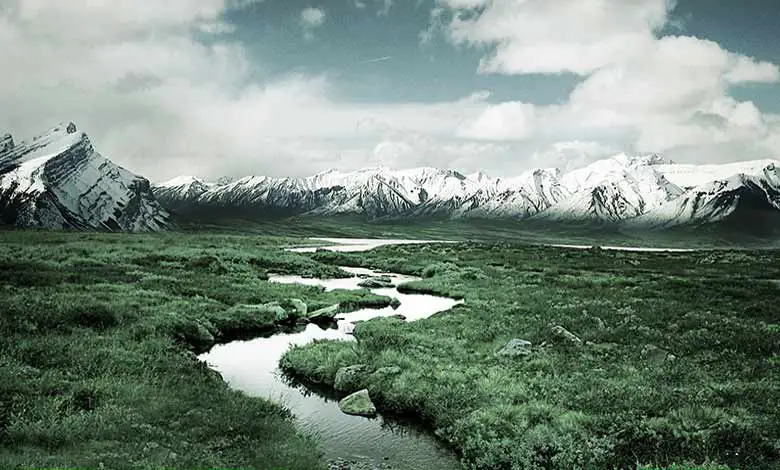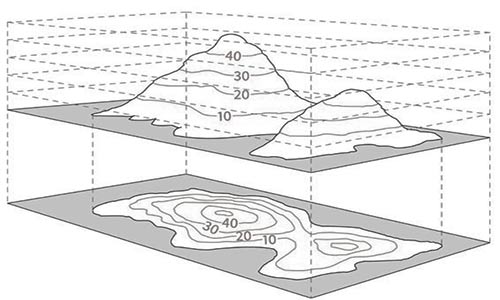
Most human civilizations developed near rivers. Rivers provide water for ecosystems, a home to different creatures, and even energy. They are also a means of transportation and recreation. Most countries have at least one major river that is essential to their economy, culture, and general way of life. Some have become quite popular across the globe because of their significance.
Egypt boasts of the Nile River, which is distinctive because it helped birth the Egyptian civilization and is right smack in the desert. Hindus consider the river Ganges in India the holiest body of water globally. The Thames in England has become famous due to the buildings and important landmarks erected along its banks, such as the Tower of London.
The rivers flow all the time constantly. Could something be pushing the water? Do Rivers have anything in common that could help you determine why they flow? Since rivers flow from one place to another, look at where each river starts and ends.
Why do rivers flow in one direction? (Scientific Explanation)
Rivers flow in one direction due to the force of gravity. Here’s a bit more detail:
Gravity: The most fundamental reason rivers flow down is gravity. Everything on the Earth is attracted towards the center of the Earth, which means it wants to find the path of least resistance downwards.
Origins in High Areas: Rivers originate in highland or mountainous regions. Snow, ice, and rain at these higher elevations form small trickles of water that combine to form streams and, eventually, rivers. These waters naturally flow downhill due to gravity.
Erosion and River Channels: Over time, flowing water erodes the land it travels across, creating a pathway or channel. Once this channel is formed, the river will continue to flow down it as this is the path of least resistance.
The Earth’s Topography: The shape and features of the Earth’s surface, or topography, also guide where and how rivers flow. Rivers will navigate around large landforms and follow valleys or other low-lying areas.
Watching a river flow can be both mesmerizing and relaxing. One important characteristic of rivers is that they continuously flow, usually in one direction. The significant difference between a river and a lake is still water. A lake has immobile water because it’s surrounded by land except where the water source comes from. But a river is flanked on both sides by land. So what makes its waters continuously flowing? Rivers keep flowing because of gravity. Water will flow downhill and won’t stop until it reaches a stable, bigger body of water such as an ocean or a lake.
Another question that nags a lot of people is: Where does a river begin? The starting point of any river is what experts call headwater. When rain falls or snow melts from high mountains, water can accumulate in an area until its volume becomes so large that it starts to flow towards a low-lying area.
Over time, this excess water’s path becomes deeper, wider, and longer due to soil erosion, effectively becoming a riverbed. Also, It’s the channel the river takes consistently in its continuous journey toward the ocean, where it finally reaches its level. Incidentally, the end of the river is called its mouth. So that’s why rivers flow continuously.
How do rivers flow in one direction?
Most of the time, you will be asked how a river flows. The velocity and flow direction will move to a different position, and you’ll get a different position of attack on the river banks. A river meander is a bend in the river, and a river will always flow at its fastest route. So most of the time river flows south and the rest of the time north due to gravity differences.
The river flows faster on the outside bend due to more energy. But at the same time, on the inside bend, where the river is flowing more slowly, it has less energy, and if it has less energy, it will deposit any load it carries, creating a slip-off slope.
So the river doesn’t get wider or narrower. It only changes shape to create more distinct meanders, sometimes called sinuous meanders.
You have a basic understanding of what contour lines are. Contour lines on a map join places the same height above sea level. They start from 0 to 3500 meters above sea level. So at sea level, we assume that we are at zero meters, then ascend or descend, depending on whether we’re going up or down.

What do these contour lines mean? These contour lines indicate that anything along this line is at zero meters. Is it 500 meters above sea level? Once you have been given contour lines, it becomes very easy to determine the direction in which the river flows because our river will never go up.
Water doesn’t go upstream but rather goes downstream. So, given these contour lines, it becomes easy to determine which direction the river flows. At the same time, you’ll find that you will not be drawing your cross-section when you get higher grades, but you will be using these lines to develop the cross-section. So it’s easy to see the river’s direction if you’ve been given contour lines.
If there are no contour lines, it’s very clear in which direction the river flows. So it’s straightforward to determine which direction the river is flowing with this one again. It’s a skill you must have because the contour lines are unclear in which direction it flows.
Learn more about the river:
Why Do Most Rivers Flow South Direction?
Why Are Rivers Important In Our Life?
Rivers Sources And Creation Process
References:
“Mapping, Remote Sensing, and Geospatial Data: What is the difference between ‘mountain,’ ‘hill,’ and ‘peak’; ‘lake’ and ‘pond’; or ‘river’ and ‘creek?'”. United States Geological Survey.
Walther, John V., Earth’s Natural Resources.
Garde. History of fluvial hydraulics. New Age Publishers. p. 14. ISBN 978-81-224-0815-7.
Castree, Noel. Questioning geography: fundamental debates.
NZ’s River Environment Classification System (REC).

